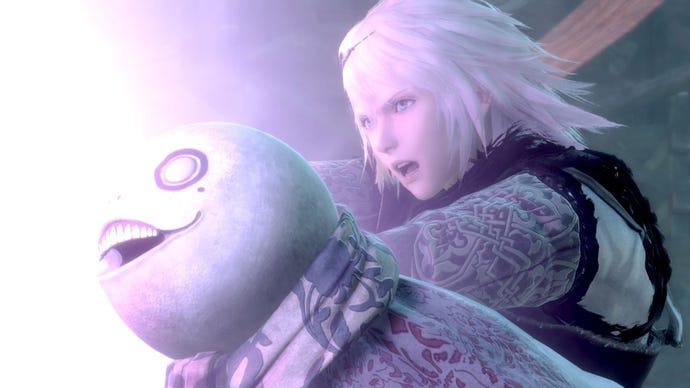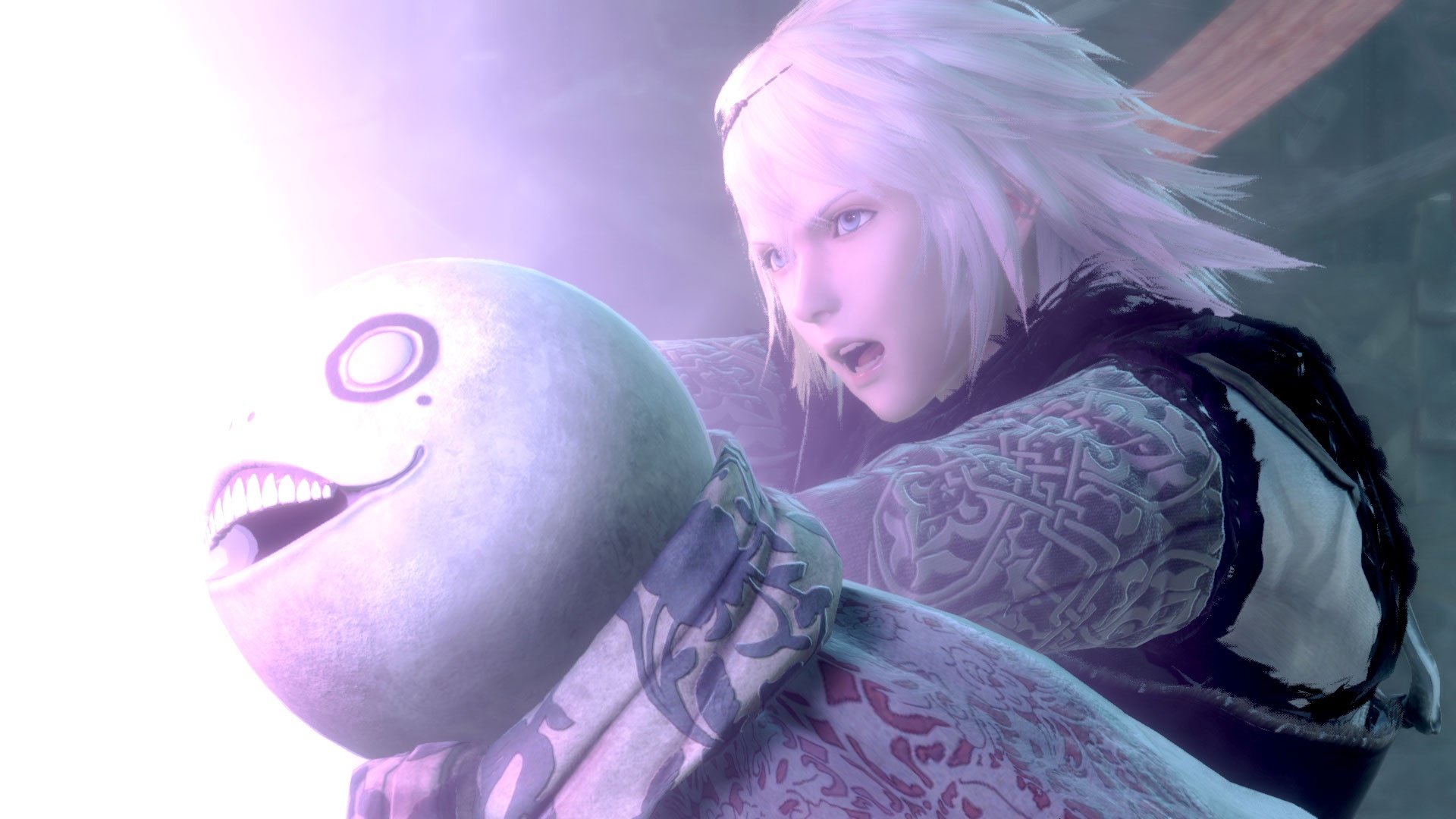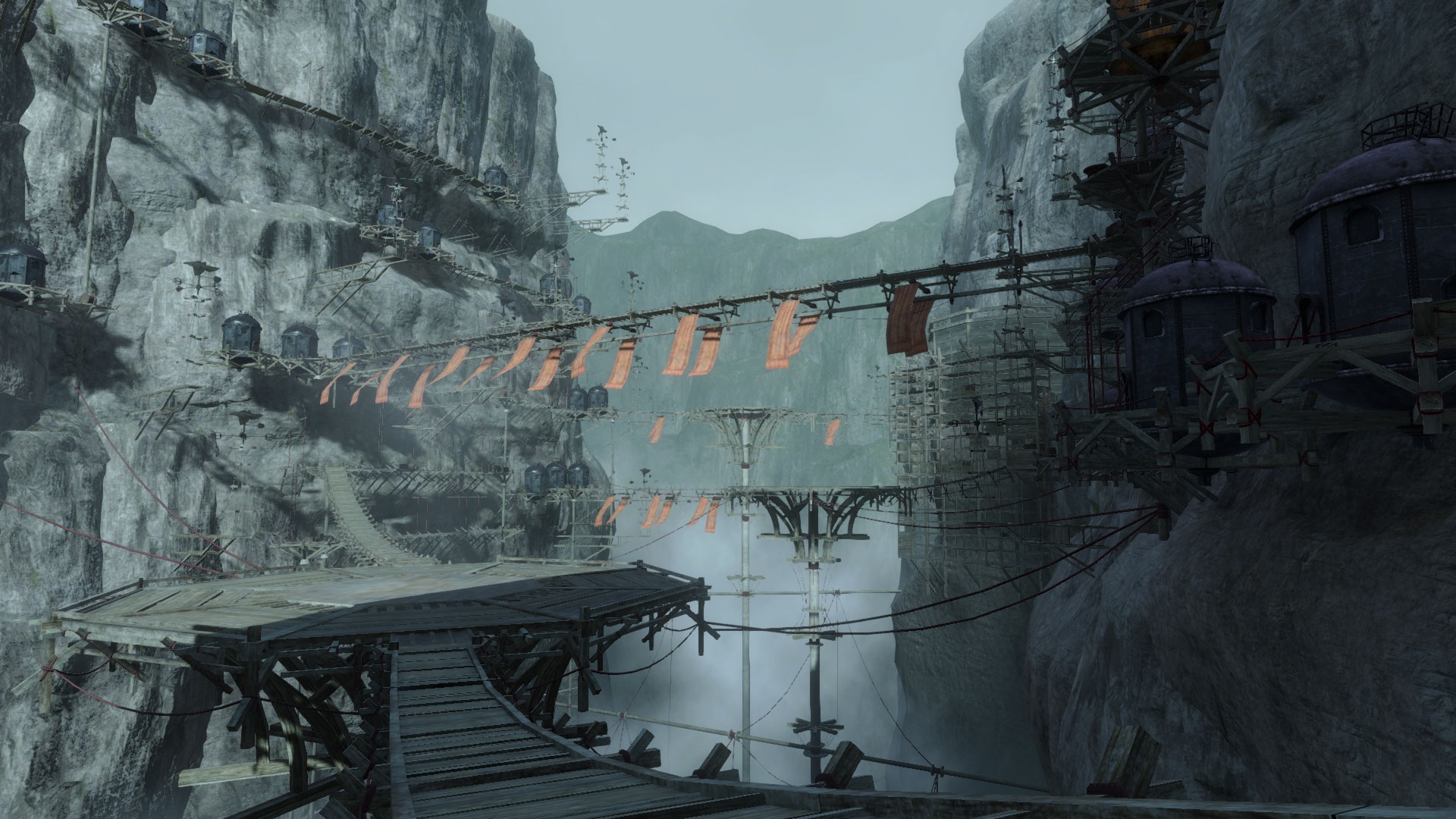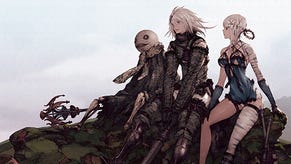Nier Replicant review: it's not a remake, but it's one of the best remasters in recent memory
This new release of Nier goes to great lengths to improve the 2010 original - and while it's no Automata, it's now a fantastic experience.
Square Enix has pitched this new version of flawed 2010 cult classic Nier as not quite a remake, but also more than a remaster. The argument is that the game defies definition, thus the deliberately-obtuse, largely random title: NieR Replicant ver.1.22474487139… Having seen basically everything the game has to offer, however, I feel pretty confident in properly defining it. It’s a remaster - but a big one.
With that said, it’s undoubtedly one of the better remasters of a game from that era that I’ve seen. But it’s important to set expectations here. Those who played Nier Automata and are expecting a remake entirely on par with that need to know that under the hood, this is still the original Nier - which while similar is a wildly different game to its explosively successful successor.
I hate putting history lessons into reviews, but it’s practically a necessity here. The original Nier had two different releases; Gestalt and Replicant. Both told a broadly identical story, but with slightly different protagonists. Gestalt cast the player as a father trying to protect his daughter in a savage, post-apocalyptic world, while Replicant used the same setup but instead put the player into the shoes of a teenaged older brother desperate to shield his younger sister. Gestalt only existed because the North American branch of Square Enix requested a more gruff, adult protagonist for the West.
While there are new nods to the older ‘Papa Nier’ lead in this game, this version is instead the Replicant version, the original. Square Enix is saying this makes it “previously exclusive to Japan”, which is kinda true but also a little cheeky. Replicant is an identical story and game to the Gestalt version released in the West, just with a different protagonist. You’ll go to the same places and do the same things while on the same mission.
With that said, there’s a lot that is new in this remastered version of Nier Replicant. Before we talk about content, it’s important to talk about the overall look and feel of this remaster. The original Nier released at the height of what was probably the most drab and brown period in video game history, and it was a game of its time.
The visual uplift of this title isn’t just about HD textures, then, but instead is about re-examining the entire game world. The geometry is the same, but it seems no texture has been left untouched, no lighting not re-rigged. Areas pop and have a definition they lacked before. For characters, Automata art lead Akihiko Yoshida has been parachuted in to redefine their style, reinterpreting the originals to bring them more in line with Automata. That means all-new character models that have a much higher level of detail. Visually, it’s an excellent remastering job.
Other changes are just common sense. There’s now proper tutorials that are introduced at the correct points of the game, visitable at any time in the menus. In fact, the presentation is cleaner across the board, making a previously often-obtuse game much more manageable.
The largest improvement to presentation comes in performance, however, which makes a world of difference. Even if nothing else were changed, the original Nier is significantly elevated by this alone. It looks better and it no longer chugs along at a low frame rate, which makes the combat breezier, snappier, and more enjoyable.
On combat, staff from Automata have stepped in to help redefine it and make it feel a little more like that game - but it still has a feel of its own, weightier, with every hit a little more definitive in a manner that feels both a touch clumsy and wholly satisfying.The truth is that this is a very different game - it’s not a Platinum-level action game, but more of a Zelda-like adventure role-playing title that happens to have hack-and-slash heavy combat. Some new additions are drawn straight from Automata, like an auto-play mode for those not as versed in action combat and a proper parry and follow-up mechanic. In other ways the system has been tweaked so the action feels more satisfyingly immediate and snappy in that way PlatinumGames so nailed with Automata.
Structurally, however, this is more of a pure adventure game. There’s an overworld, some towns, and several dungeons that play out in a sort of combat-heavy ‘diet Zelda’ fashion. The game is split into two halves with a time skip in the middle, and that’s used to justify you visiting most key locations twice, once in each half. In 2010 this might’ve seemed like particularly canny content reuse, but 11 years later the backtracking to places you’ve already seen stings a little more. In other places the skip is used more effectively, such as in the development of the player character's skills - they gain access to two more weapon types, and new in this version is the ability to seamlessly and instantly switch between them mid-combat.
The edge is taken off repeated visits to familiar dungeons through how unique each is. The Junk Heap, an ancient robot factory, is more traditional with auto-locking doors that free you again after combat encounters are over, but still spices things up with on-rails shooter sequences and camera angles that occasionally draw back to a Zelda-like top-down perspective. Others take on more unique forms. One ‘dungeon’ plays out as a text-based adventure game with the player making choices. Another provides combat and traversal challenges, but has each room lock out some of your abilities to make you think on your feet about how to reach your goal. My favourite pulls the camera right back into an isometric computer-RPG style perspective. The fact that each is slightly different means that even on revisits, they remain relatively engaging.
On top of that, the narrative is so strong that the cutscenes, mid-battle banter and general intrigue keep you powering through not just one play-through, but multiple. The familiarity with the repeated locations makes your second, third, or fourth runs in search of more story titbits quicker - and the pacing ultimately works.
That well-pitched pacing is interrupted slightly, but crucially not ruined, by some new content. The first piece slots seamlessly into the story itself, taking place around two thirds into the game. It’s a story-driven jaunt through a creepy 2D side-scrolling environment with a few puzzles on the way. It culminates with one of the biggest and most spectacular boss fights in the game - a battle that certainly feels Automata-inspired. Like much of Nier Replicant, the story told here is straightforward at first, but additional contextual scenes added in your second and third play-throughs of the content reveal the dark truth of events.
The second piece of content is practically impossible to talk about without getting into spoilers, so we won’t but to say that it’s a couple of hours of new stuff that leads to an additional ending which adds to the wider Nier universe lore. I really enjoyed both pieces of added content, finding that they were additive to the broader story of Nier Replicant and crucially avoided the easy mistake of feeling the need to endlessly connect to and echo Automata, a much more successful game that catapulted the series into the limelight.
Part of what has made this slot together more naturally, I feel, is the dedication to redoing elements of the game. In both English and Japanese the game script and voice acting have been reviewed, with the original cast returning to turn in new performances of the old and new content alike. The translation is excellent, balancing respect for the original’s quirks with its mission to improve the game in general, and the voice performances are generally fabulous. In this version, even the most minor of NPCs is voiced, which is a nice touch.
The structure of Nier Replicant is such that it’s meant to be played several times. Indeed, to get a true grasp of the story, you’ll want to see the game’s credits roll five times - but due to the structure of the game that doesn’t technically mean five full play-throughs of the story. This sounds like a chore, but Automata fans will know how adept Nier creative director Yoko Taro is at making subsequent play-throughs of his games rewarding. Given progression carries over, matters are also made easier by difficult enemies from earlier runs getting toppled in seconds as you work towards your third or fourth ending.
The version of the multiple endings concept presented in Replicant is less intricate than Automata, but I also in many ways think it’s more interesting moment-to-moment as the mystery unravels before your eyes, with quiet revelations sometimes simply delivered in subtitles that translate aurally indiscernible dialogue.
As I already said, it’s the characters that’ll keep you going. You’ll be drawn in and want to learn as much as possible about each of them. Sometimes they’re a little silly. Sometimes they’re heart-wrenchingly sad. The stand-out star remains Kaine, a fierce warrior who is basically dressed in lingerie. Her outfit, which has been mildly redesigned, remains one of the elements of the game that I most dislike. There’s a MGS5 Quiet-style ‘words and deeds’ reason for her dressing the way she does, but for the most part I think it’s a rubbish excuse. She’d be a great character however she’s dressed.
Nier Replicant is ambitious, clever, and has an absolutely killer story. Back in 2010, I gave the original game 6/10 in view of its muddy visuals, poor performance, and a whole lot of backtracking. Two of these issues are comprehensively fixed in this comprehensive remaster. While the backtracking remains, it feels much less painful this time around thanks to it being part of a game with smooth performance that’s ultimately much more fun to actually play. The game is considerably improved as a result, and much of what made the original quietly special can now shine far more brightly. It might not be perfect, but within this slightly flawed framework beats the heart of an absolute masterpiece. Those who fell in love with Nier through Automata should go into this with a clear expectation that this is not that game - but if they do, they’ll find much to love.
Version tested: PS4 (played on PS5). A copy of the game was provided by the publisher.












